The traditional art of Kalamkari uses vegetable dyes as colours and utilises unique pens made from the bamboo tree to paint by hand on cotton or silk fabric. The Persian term “Kalamkari,” in which “Kalam” means pen and ‘Kari’ means workmanship, encapsulates the origin of the word “Kalamkari.
This craft requires 23 time-consuming procedures, including starching, cleaning, hand painting, block printing, and dyeing. Traditional motifs made by craftspersons in Kalamkari include flowers, peacocks, paisleys, and celestial figures from Hindu epics like the Mahabharata and Ramayana.
The History of Kalamkari
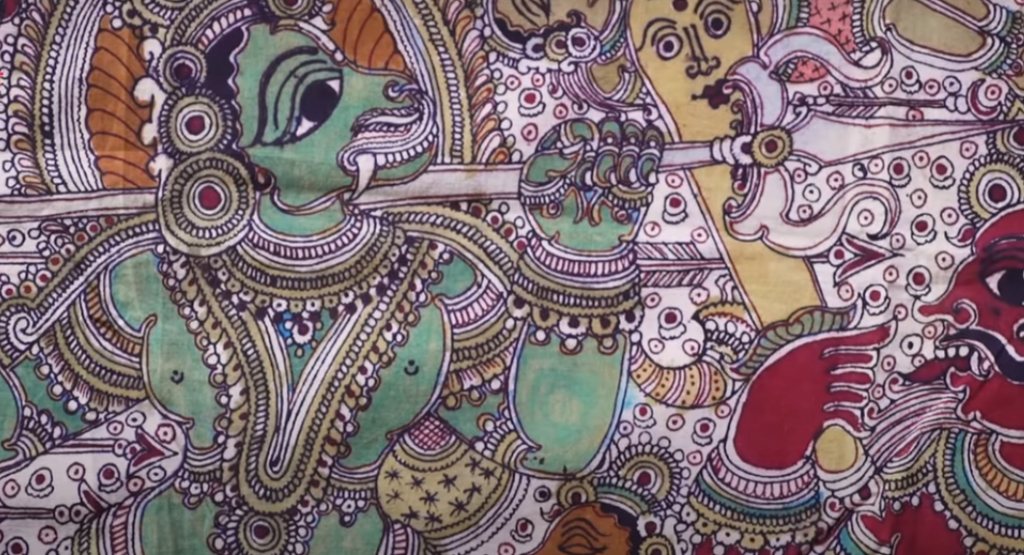
The Kalamkari art form has a history dating back over three thousand years, and pieces of Kalamkari fabric have been discovered at archeological sites in the Indus Valley.
Chitrakars, who were nomadic groups of artists and storytellers in India, travelled from village to village – narrating tales of legendary Hindu heroes through song and dance. They talked about wars that were lost and won, demons killed, and gods placated. They used on-the-spot plant dye extracts to colour enormous canvases in order to depict their stories.
But it was during the middle ages (500-1500 ce), with the patronage of the Sultans of the Golconda region, that the art of Kalamkari began to flourish. The term “Kalamkari” originated from the term “Qualamkars,” which was used by the Mughals who supported this art in the provinces of Coromandel and Golconda and used to describe the artisans skilled in the art.
Creation of Kalamkari
There are two primary Kalamkari painting styles: the first is a fully hand-painted style that is primarily narrative in nature and usually religious. The other technique is block printing, which is more often used to create fabric for use in clothing and other items of daily use. The principal centre for block-printed Kalamkari is Masulipatnam, while SriKalahasti, a town known for its temples, is the location for hand-painted Kalamkari.
The technique of Kalamkari Art differs significantly between the Machilipatnam and Srikalahasti styles, but the processes and materials are similar in both.
The cotton fabric used for Kalamkari art is first properly cleansed with water to get rid of any dirt or grease. It is then sun dried before being re-soaked for a short time in buffalo milk combined with myrobalan fruit dust. After squeezing out excess liquid, it is dried once more.The outlines of the drawing are then created using a tamarind tree twig as a charcoal pencil.
The Kalamkari pen is created from a bamboo reed that has been sharpened at one end. A cotton fabric is rolled on the stick in a certain pattern, and a thread is wound around it to hold the cloth in place where it is needed. When cotton cloth is soaked in dye and applied to the fabric, it serves as filler. The pen must first be dipped in the necessary dye before being gently pressed to release the colour onto the area that has to be painted.
The outline of the painting or drawing is created by using a natural colour – combining 500 grams of sugarcane jaggery, 100 grams of palm jaggery, and 1 kilogram of rusty iron in 10 litres of water to create a solution known as kais.
The material that has been stained with kais and alum solution is then submerged in hot water for around 45 minutes. The fabric is then cleaned in a nearby pond or a river, and allowed to air dry for at least three days. The fabric is once more soaked in buffalo milk after drying. Before being used, the fabric is finally washed once more. Similar to the Srikalahasti style, the Machilipatnam technique begins with washing and sun drying the fabric. Since this printing method uses individual blocks instead of line drawings for each colour, artisans use carved wooden blocks and natural colours to print traditional motifs on cotton fabric.
The Kalamkari Experience
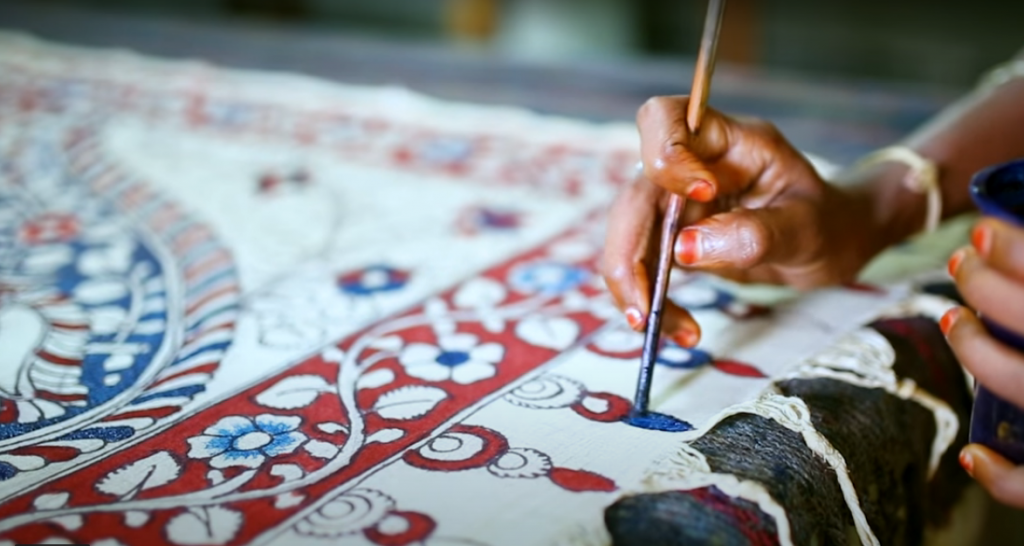
Kalamkari does not utilise synthetic colours. It uses natural vegetable dyes for patterns and designs which look vivid and brilliant in the finished product. Kalamkari artwork on fabric is used to create saris, curtains, hand towels, wall paintings, prayer rugs, wraps, bed covers, door covers, and clothing material.
The “kalam” or pen is used by the Kalahasti artist to outline as well as add colour. Without using any blocks, he works only by hand when creating his paintings. He first applies a mordant (dye) to the fabric, then uses the black colour “kasami” to sketch the outline of his pattern before gradually adding the remaining colours, one at a time. He only employs the vivid shades of yellow, indigo, red, and green that come from plants. As a result, every finished piece is distinctively personal, original, and one of a kind.
The processing of the Kalamkari fabric and the intensive creation process enable it to withstand up to 20 washings without change in colour or texture. Every wash makes the cloth look better and better, with the motifs striking out even more against the background. The resin and cow milk mixture, in which the fabric is soaked for at least an hour before the printing process, giving the work a glossy appearance. Cow dung, seeds, crushed flowers, and various plants help produce a variety of colour effects on the fabric.
Types of Kalamkari
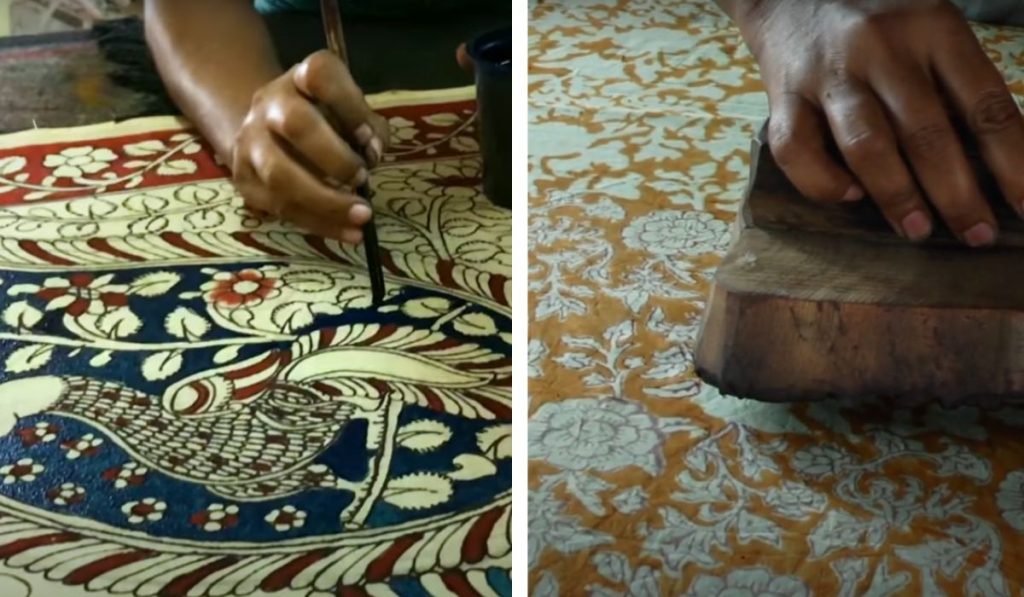
There are two major Kalamkari art styles: the Machilipatnam style and the Srikalahasti style.
Traditionally, Machilipatnam kalamkari is printed with hand-carved traditional blocks that display intricate detailing. While Srikalahasti Kalamkari entails hand-painting a fabric with coloured dyes. They craft stories from Hindu mythology and depict events from epics and folklore.
The Andhra Kalamkari designs incorporate animal and bird patterns and architectural elements from Indian forts, palaces, and temples. While the Gujarat Kalamkari depicts motifs of mythological figures like Krishna and Arjuna from the Mahabharata, Lord Krishna, Lord Ganesha, Lord Buddha, etc.
Contemporary Expressions in Kalamkari
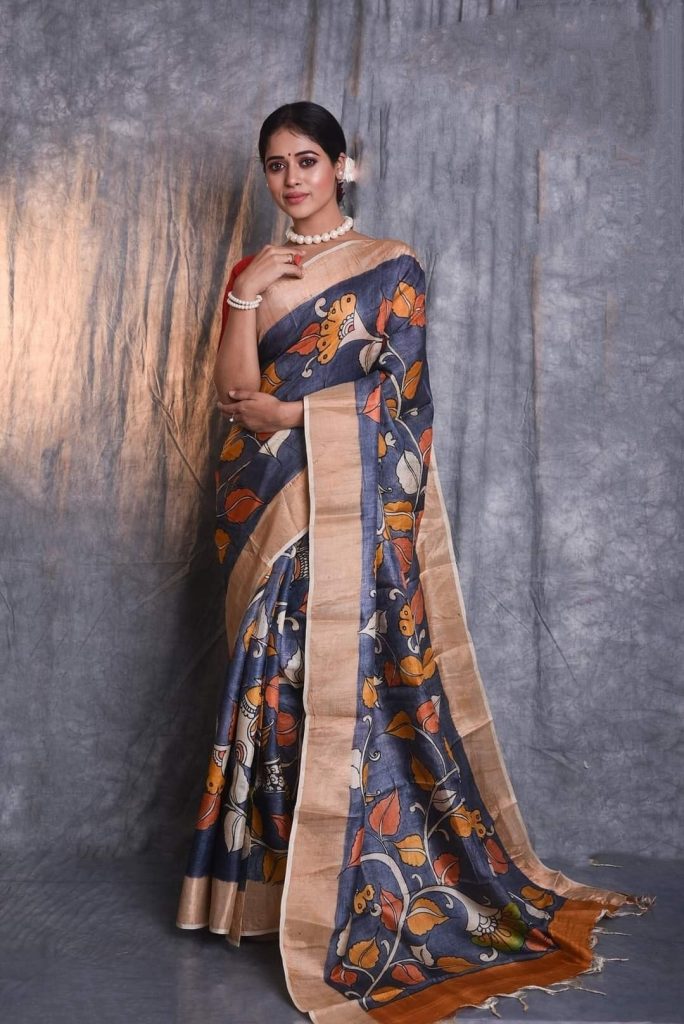
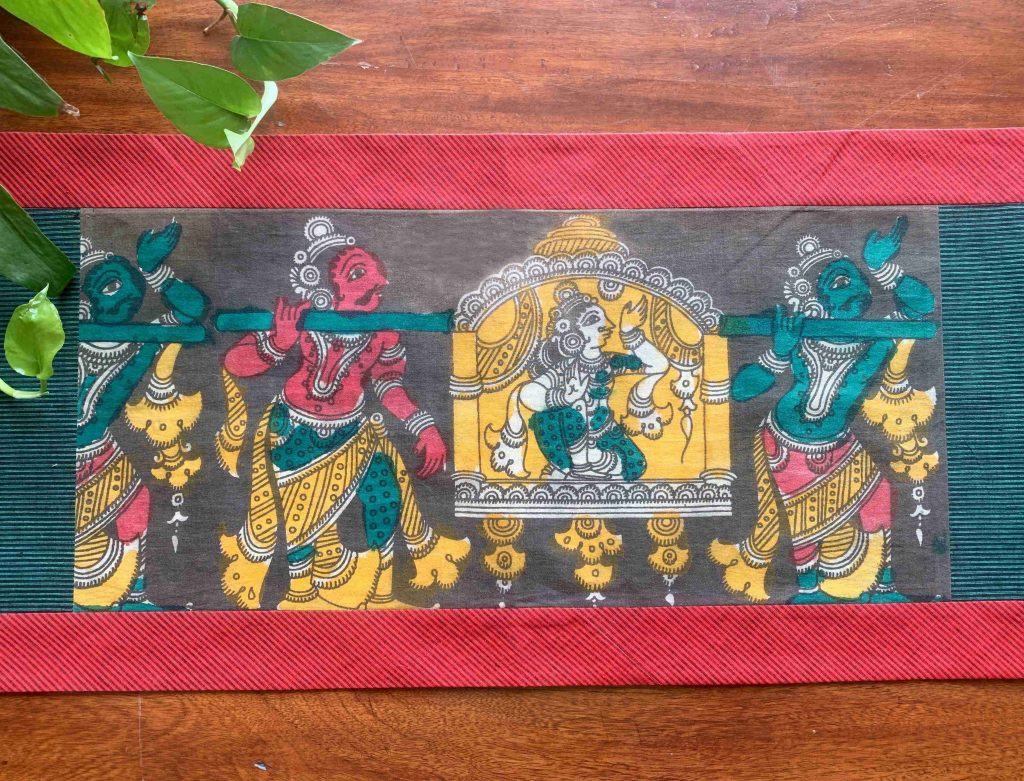
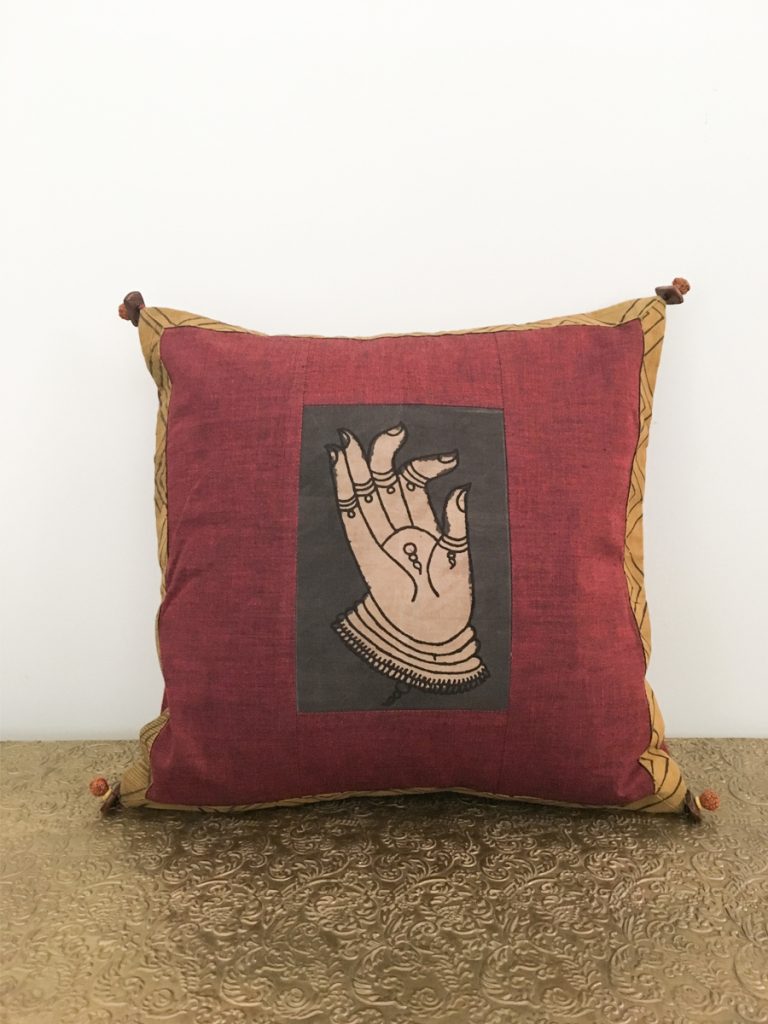
It is incredible that the Kalamkari craft that is more than three thousand years old still exists, unchanged and magnificent in today’s world. The craft has retained its historical identity and distinctive flavour while absorbing numerous contemporary influences, such as screen printing. The designs and motifs of the craft speak in their language, whether hand-painted or block-printed, and it is only through understanding this inner voice, the art’s future can be ensured.
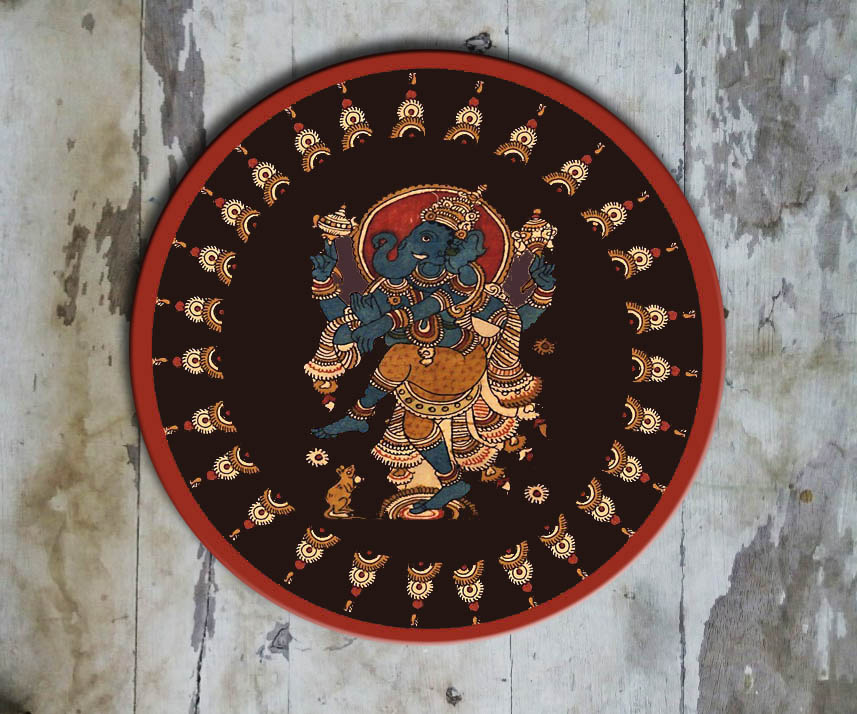
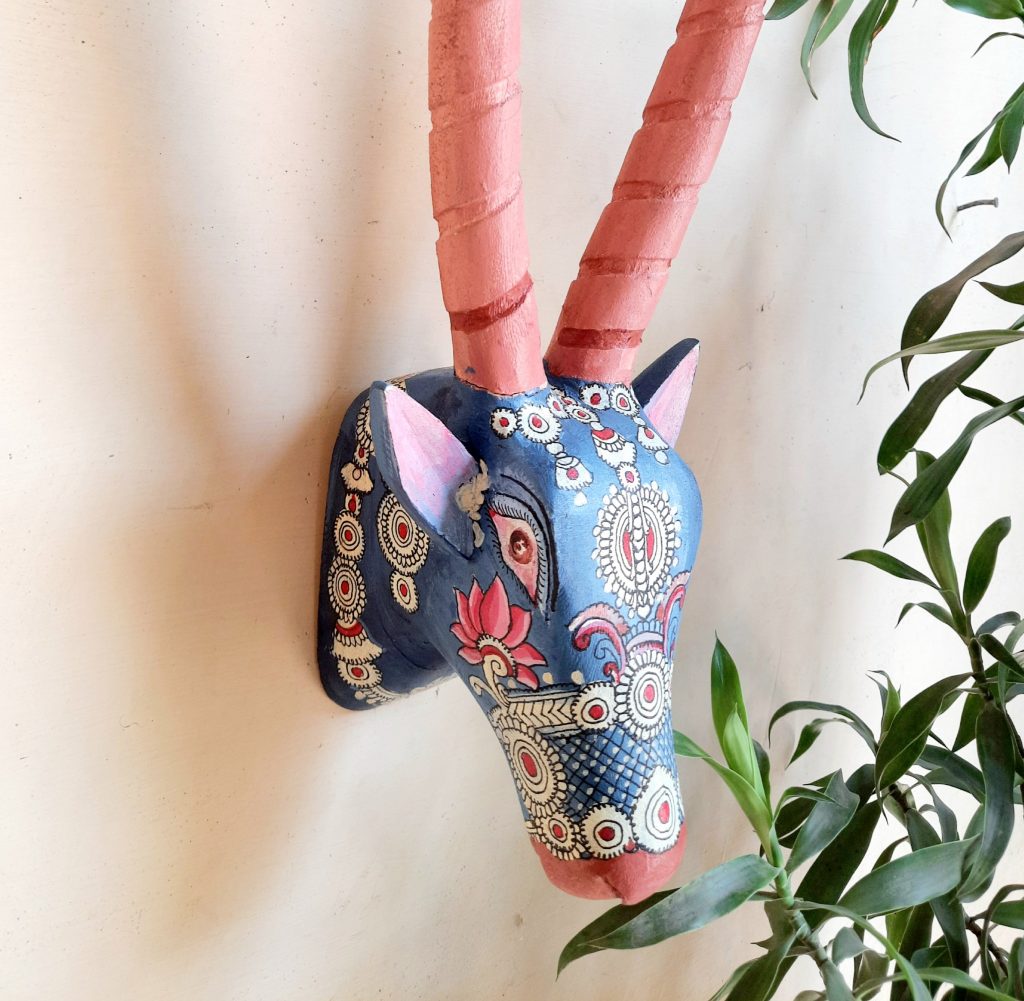
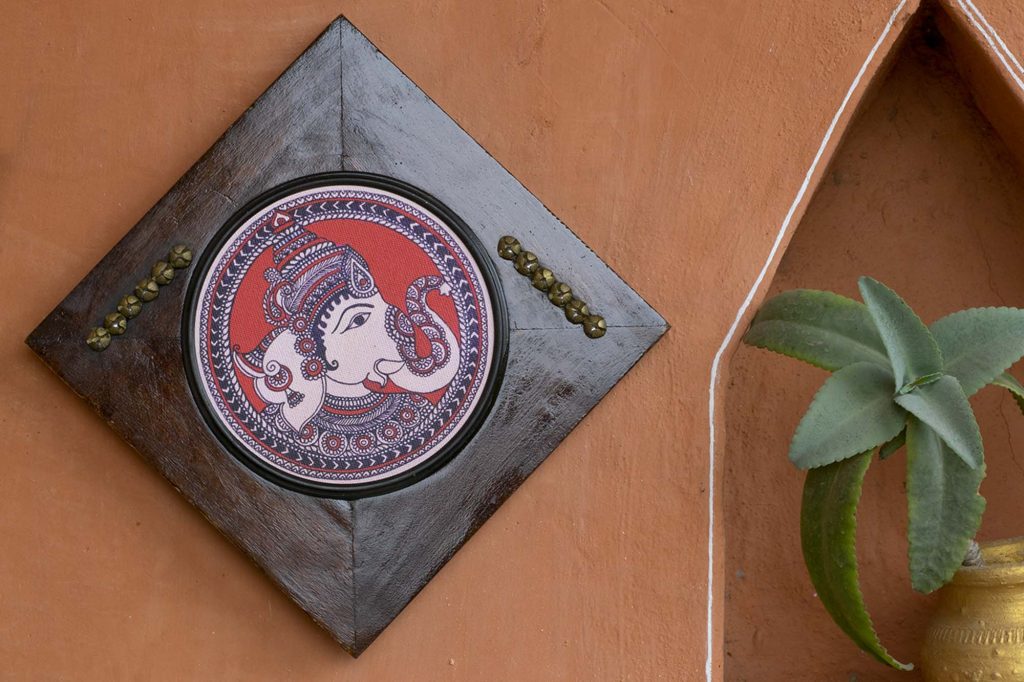
At World Art Community we are so proud to be playing our part in the preservation of Kalamkari Art for our future generations. It is a privilege for us to be supporting our artists and their painstakingly crafted expressions in rich colours and designs – made up into saris, apparel, accessories and more. Explore our expressions in Kalamkari Art here
image credits:
1) Live history India 2) Chai Bisket 3) Latesttrendy
